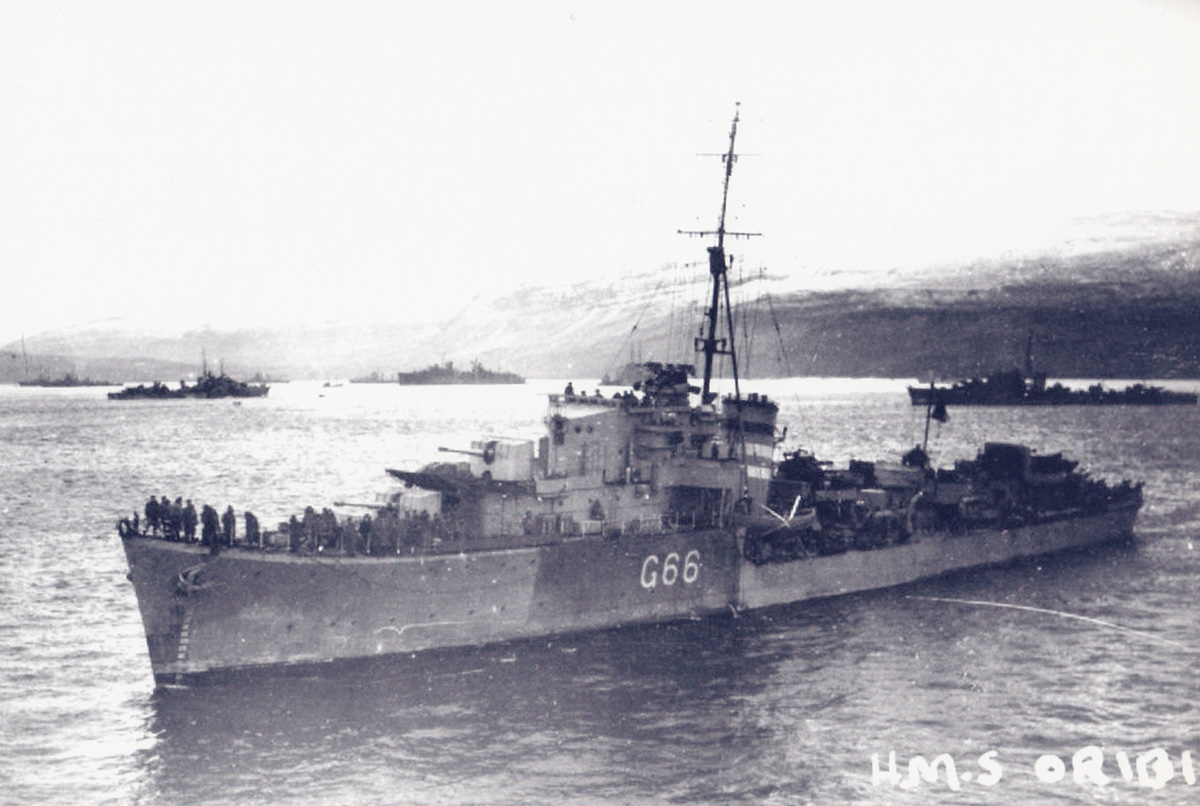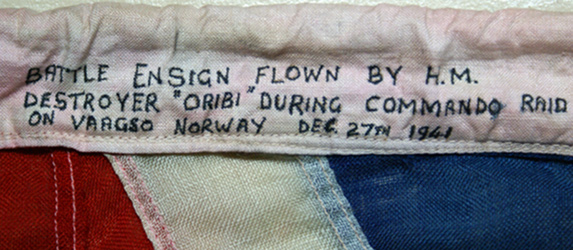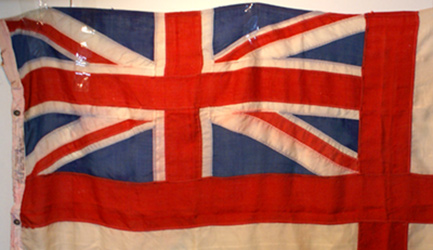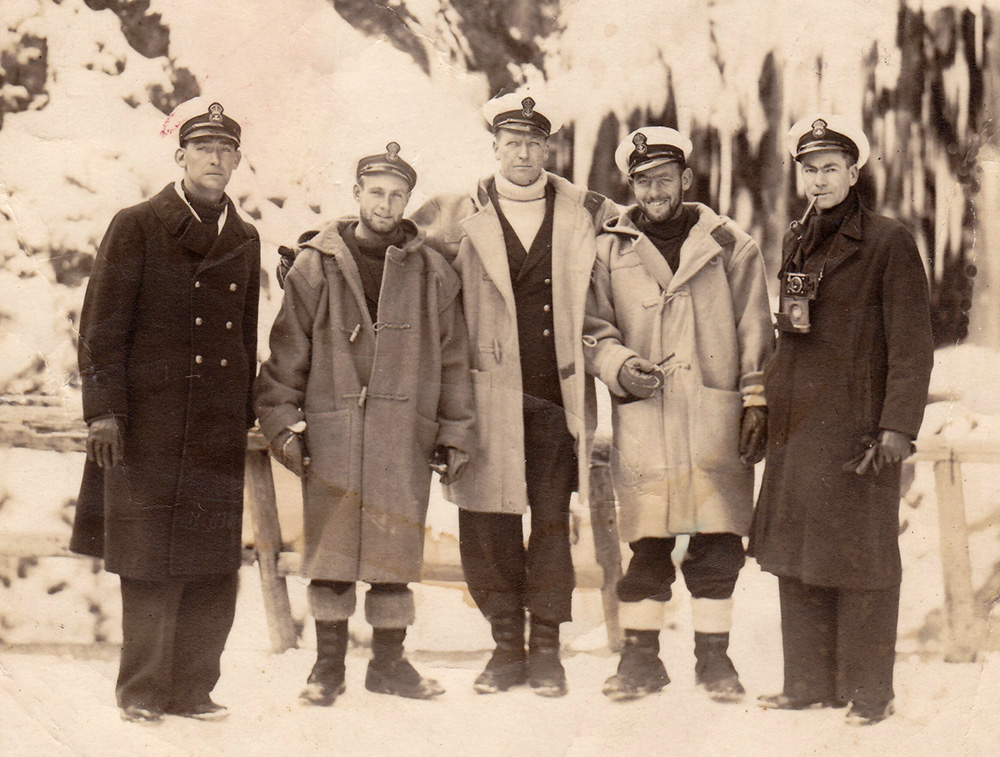A HARD FOUGHT SHIP
The
story of HMS Venomous
William Munro, Yeoman of Signals JX128928
HMS Venomous, January 1940 - May 1941
Of what avail the loaded tube,
the cannon or the shell;
If flags or W/T default
The Fleet will go to hell.
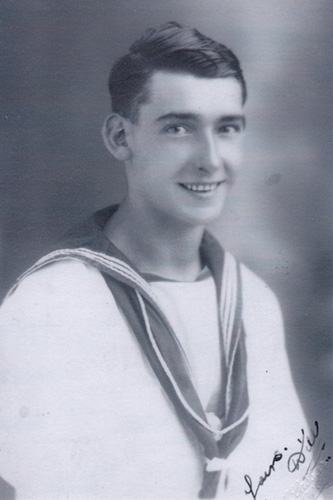
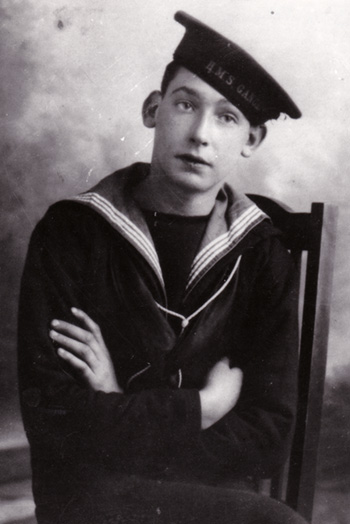 William
Munro was born at Hebburn, between Jarrow and Gateshead on the south
bank of the Tyne, on 15 November 1910. His father, also William, was a
coalminer and was killed in a mining accident when his son was five.
Rachel, his Mother, was left to the raise a family of three, two boys
and a girl (who died aged twelve). Young men on Tyneside went down the
pits or went to sea. When William left school at 14 he followed his father down the pits (working with the pit ponies) but
having lost her husband in a mining accident his Mother would not have
been happy and although it meant him leaving home she must
have been relieved when he decided to join the Navy as a boy
sailor.
William
Munro was born at Hebburn, between Jarrow and Gateshead on the south
bank of the Tyne, on 15 November 1910. His father, also William, was a
coalminer and was killed in a mining accident when his son was five.
Rachel, his Mother, was left to the raise a family of three, two boys
and a girl (who died aged twelve). Young men on Tyneside went down the
pits or went to sea. When William left school at 14 he followed his father down the pits (working with the pit ponies) but
having lost her husband in a mining accident his Mother would not have
been happy and although it meant him leaving home she must
have been relieved when he decided to join the Navy as a boy
sailor.
He volunteered on 13 January 1927 and like most boy sailors his first ship was HMS Ganges,
the boys training establishment on the north side of the River Stour
opposite Harwich which had a terrifying tall mast which had to be
climbed every day and harsh naval discipline. He was 16 and only 5' 4"
tall with a distinctive scar caused by a scald on his left shoulder. By
the time he enlisted for 12 years on 15 November 1928, his eighteenth
birthday, he had grown four inches and had served as a Boy Signalman on HMS
Benbow, an Iron Duke Class Battleship, HMS Cairo, a light Cruiser (3 months) and on HMS Ramillies, a Revenge Class Battleship (2 months).
He was now rated as an Ordinary Signalman and stayed with the Navy's big ships, serving in HMS Cyclops, a submarine repair and depot ship (5 months); HMS Concord, a C Class Light Cruise (1 month) and he was on HMS Centaur,
a C Class Cruiser (4 months) when he was made Signalman in October
1929. The photograph on the right is of William Munro as a Boy Sailor
at Ganges
and on the left as a Signalman wearing tropical rig. He had travelled
widely on a great variety of warships and looks a confident young man.
William Munro on Signals (left) and Semaphore training (right) - double click to view full size
Courtesy of Terry Munro
************
On 4 January 1930 Signalman William Munro joined his first destroyer, HMS Wrestler, a sister ship of HMS Venomous. On 10 April he joined HMS Antelope,
a modern newly completed A Class destroyer which was sent to the
Mediteranean as part of the 3rd Destroyer Flotilla. Aside from three
months on HMS Wolsey, a V & W, he remained in Antelope until October 1932. In 1933 he spent three months on the light cruiser, HMS Champion, attached to the Signals School before joining HMS Hood on 31 August. "Hoodwas
the last Battle Cruiser built for the Royal Navy and was the
largest and most powerful warship in the world for twenty years after
her commissioning in 1920 and her prestige was reflected in her
nickname 'The Mighty Hood' (Wikipedia)." By April 1934 he was an Acting
Leading Signalman on the world's most powerful Battle Cruiser.
His Mother had remarried, to a
Henry McHenry and had two more children, a boy and a girl, but she died
in 1933. Two years later, William, now aged 25, married Sarah Pope on New
Years Day 1935 and they lived together in Gosport, his home port, when
he was not at sea.
After sixteen months as a Leading Signalman in the Light Cruiser, HMS Neptune (above) he returned to Hood in September 1936 and was soon made Acting Yeoman of Signals, a key position in any warship but especially so on "the mighty Hood". He was Yeoman of Signals on Hood when this photograph was taken at Malta on New Years Day 1939.
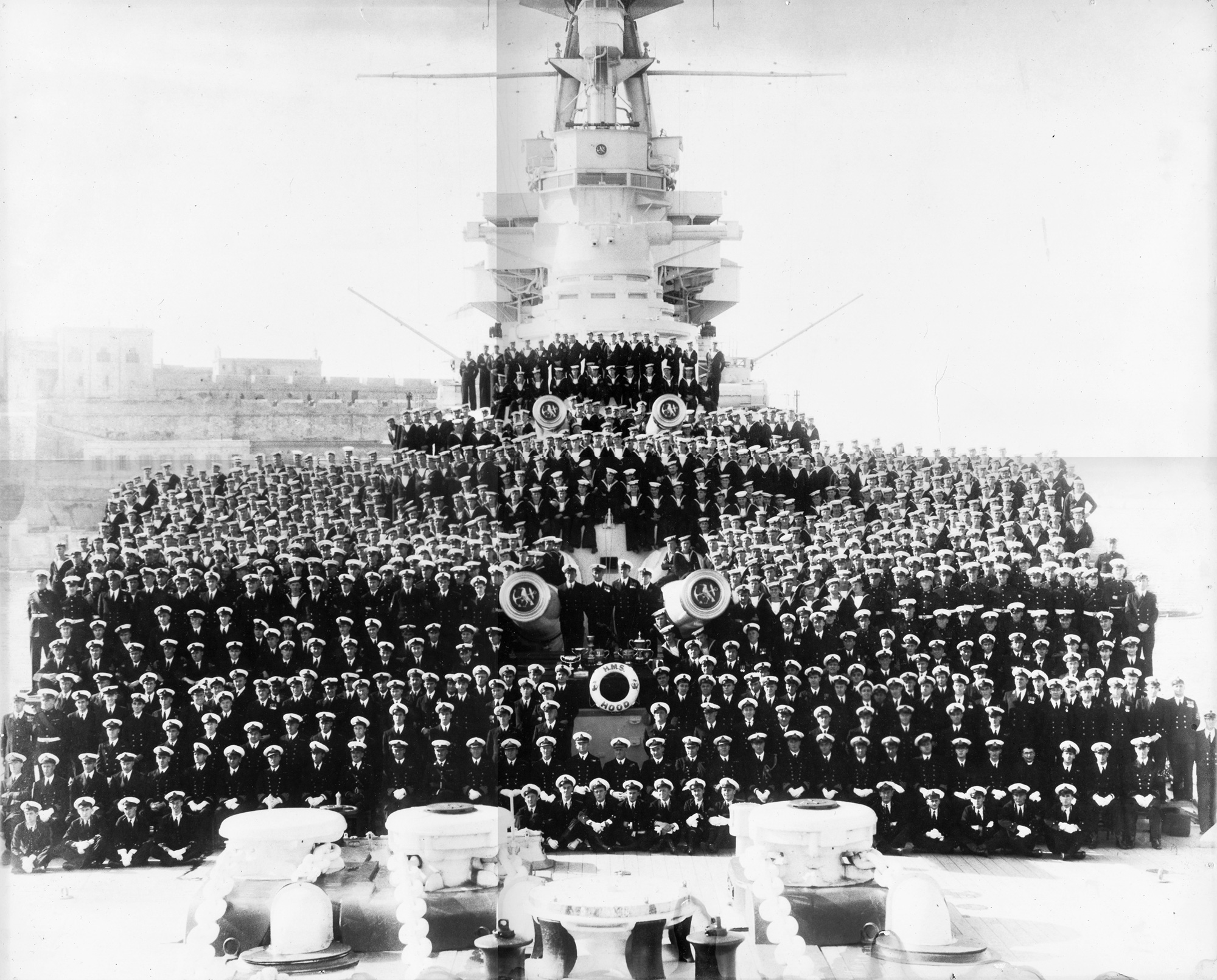 The ship's company of HMS Hood taken at Malta on New Years Day 1939 - click on the image to view full size
The ship's company of HMS Hood taken at Malta on New Years Day 1939 - click on the image to view full size
Terry Munro has identified his father, Leading Signalman William Munro, as the man standing alone top right
The photographs below are of Yeoman of Signals William Munro on HMS Hood
There were only three survivors when HMS Hood was sunk by the Bismarck on 24 May 1941
Courtesy of Terry Munro
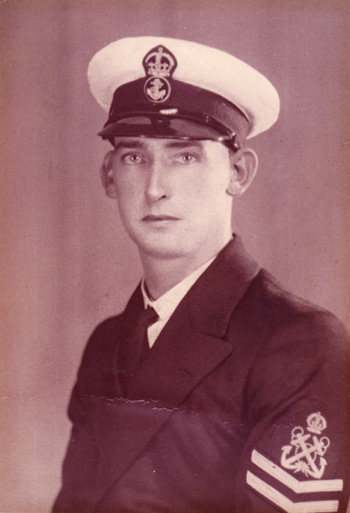
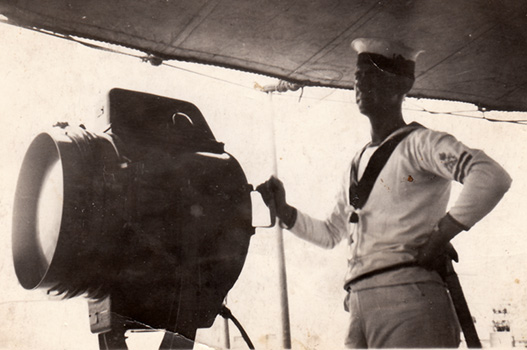 On Christmas Day 1939 he "reverted"
to the rank of Leading Seaman and on the 11th January 1940 this highly
experiened Signalman was posted from Hood to an elderly V & W Class destroyer, HMS Venomous.
On Christmas Day 1939 he "reverted"
to the rank of Leading Seaman and on the 11th January 1940 this highly
experiened Signalman was posted from Hood to an elderly V & W Class destroyer, HMS Venomous.
This was quite a comedown from Hood
and the reason for this humiliating setback to his career is not
recorded on his service record. His son, Terry Munro, thought he took
the blame for a mistake made by one of the juniors on his watch and:
"The captain of the Hood,
who was reputed to be a bit of an old school stickler for perfection,
decided to revoke the rank for 6 months. In a way, it did Dad a favour,
as it meant, when he was approaching reinstatement there were no
vacancies for the rank on Hood so he was drafted off".
There is little doubt that this saved his life as well as gifting to Lt Cdr John McBeath RN, the CO of Venomous, an exceptionally able Yeoman of Signals.
South African born John McBeath had
been educated in the USA and joined the Royal Navy as a boy sailor, had
risen through the ranks and been commissioned. HMS Venomous was his first command. He took over from Lt Cdr Donald G.F.W.McIntyre on 8 May 1940 and William Munro joined Venomous
three days later initially as Leading Signalman but from August as
Yeoman of Signals. They served together through the most dangerous
years of the war. William Munro left no written account of the war and
I have had to rely on the memories of his his three sons, Terry, Michael
and William Munro, and his daughter Pat for the following anecdotes. The photograph
on the left was taken by Lt Richard Kershaw RNVR on the bridge of HMS Venomous.
On the 22nd May Venomous escorted the Isle of Man ferry, Mona's Queen,
taking the Guards to Boulogne in a vain attempt to prevent the city
falling to German forces. She returned with refugees including 32 young
girls some as young as five with their teachers and nunsfrom a Catholic
orphanage. Mike Munro recalled a story told him by his Mother:
"She said that
dad had told her about the evacuation of the nuns and children and he
had described the ship being attacked by German aircraft; she
recalled him saying that the ship had also been attacked with bombs at
some point on the crossing, all of which missed. He had recounted
that the nuns had been praying and also scattering religious medallions
around the ship one of which he picked up and brought home to
her. Being a devout catholic, Mum attributed the fact that none
of the bombs hit Venomous to actions and prayers of the nuns!"
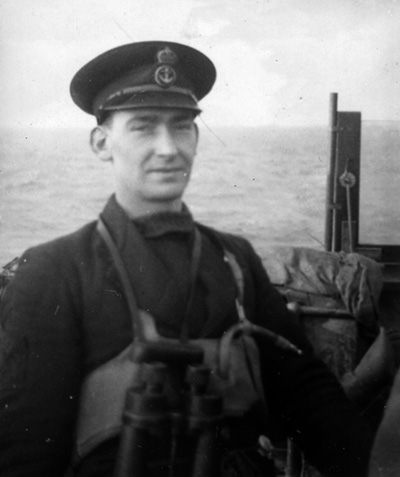 By far the
most vivid story told by William Munro to his family is his description of an incident he witnessed when Venomous entered the harbour of Dunkirk at dusk on 23 May 1940 to bring back the Welsh Guards. Venomous
berthed on the Quai Chanzy alongside the Gare Maritime on the opposite
side of the narrow harbour from the town. The quayside was lined with
cranes. He described the man
operating the twin Lewis guns with a swivel mounting on the wing of the
bridge struggling to remove the empty drum magazines.
By far the
most vivid story told by William Munro to his family is his description of an incident he witnessed when Venomous entered the harbour of Dunkirk at dusk on 23 May 1940 to bring back the Welsh Guards. Venomous
berthed on the Quai Chanzy alongside the Gare Maritime on the opposite
side of the narrow harbour from the town. The quayside was lined with
cranes. He described the man
operating the twin Lewis guns with a swivel mounting on the wing of the
bridge struggling to remove the empty drum magazines.
"The
magazines were joined
together on the top of the gun and were taken off and replaced
together. He said that the chap emptied the magazines and unclipped
the magazines to lift them off ready to be replaced with full ones. As
he tried to remove the empties they jammed and he had to force them
off. They came free with a jerk and as he staggered backwards his hands
come up in front of his face. At that moment a shot
fired by a sniper apparently in one of the dock cranes hit the drums.
Dad said that the chap had seen where the shot came from, reloaded and
fired at the sniper who fell from the crane being hosed with machine
gun rounds all the way to the ground, and all the time the gunner was
swearing at the German without repeating himself. He apparently
emptied the new mags into the sniper after he hit the ground!"
Venomous took aboard 500 Welsh Guards in 35 minutes "and as they began to go astern after casting off, a squaddie was seen
running onto the pier shouting, 'wait for me'. The skipper put the bow
against the pier and the squaddie leapt for the prow and was hauled
inboard by the fo'c'stle party after which they departed at high speed!"
The full story of that day is one of the longest and most dramatic chapters in the new edition of A Hard Fought Ship.
It tells for the first time the full story of the evacuation of the
Guards by seven V & W destroyers plus the Flotilla Leader, HMS Keith, during which two of their COs were shot dead on the bridge of their ships by sniper fire.
Eric Poultney, a long serving Telegraphist in Venomous, kept copies of the signals sent and received at Boulogne and they vividly convey the sense of how decisions were made and changed throughout the day as they were overtaken by events.
Most of the stories recalled by
William Munro's family are not so easily dated but are worth a mention.
"On patrol in rather dull weather, a German plane suddenly dropped out
of the low cloud and strafed the ship Dad and McBeath both dived for
cover behind what they perceived to be protection only to find out
after the enemy had departed, that they had ducked behind a sheet of
canvas." Another family story might even have occured after McBeath and Munro had joined their next ship HMS Oribi:
There
was also the time the ship was docked for maintenance and "Dad managed
to get home to Gosport for a few days during which there was a night
bombing raid on the Fuel Oil Depot in Gosport and the leading bomber
overshot the target and dropped bombs in the Navy victualing
yard, hitting part of the Rum storage. Of course, when the spirits
caught fire, the remaining raiders, thinking they had found the
target, immediately concentrated on the inferno and obliterated that
area containing the Rum Store. When dad returned to the ship and passed
on the ‘sad’ news, they declared that this was a dirty tactic. Shortly
after, they encountered a U-Boat trying to make a home run to France,
depth charged it with positive results and the McBeath said,”That’s for
the Rum store in Gosport”. Dad said that was the start of the sea
victory."
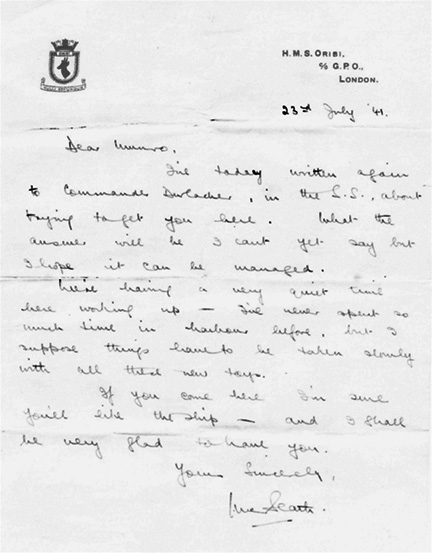 HMS Venomous
was based at Londonderry when John McBeath was succeeded as CO by Cdr
H. Pitcairn Henderson RN on Christmas Eve 1940. McBeath was given
command of HMS Oribi, an O Class destroyer on 1 May 1941 while under construction at Govan on the Clyde but she was not commissioned until July.
HMS Venomous
was based at Londonderry when John McBeath was succeeded as CO by Cdr
H. Pitcairn Henderson RN on Christmas Eve 1940. McBeath was given
command of HMS Oribi, an O Class destroyer on 1 May 1941 while under construction at Govan on the Clyde but she was not commissioned until July.
William Munro left Venomous on the 5th May and according to his service record spent the next three months at HMS Victory,
the shore base at Portsmouth near where he and his wife Sarah lived in
Gosport. In fact it seems he was on the staff of the Royal Navy Signal
School at Portsmouth (before the move to Leydene House near
Petersfield).
It must have been there that he heard the dreadful news of the sinking of HMS Hood by the Bismarck which
shocked the whole nation but must have been felt most by the families
and former shipmates of the 1,450 men who died when when her aft
magazines exploded and she sunk at the Battle of the Denmark Strait between Greenland and Iceland on 24 May 1941. Bismarck was sunk three days later after she was attacked in mid Atlantic by torpedo bombers from HMS Ark Royal and her rudders jammed in a turning position.
William Munro knew Ted Briggs, one of the three survivors, a signalman, and Ted told him that "the shell from the Bismarck
hit just beyond the plating of the magazine but did not immediately
explode and everyone thought they had got away without any extensive
damage. Shortly afterwards came the magazine explosion and the
signalman just had time to leave the bridge and basically step into the
water". To find out more about HMS Hood visit the website of the HMS Hood Association.
John McBeath was keen to build a
strong team aboard his new command and went to a lot of trouble to
secure Munro as his Yeoman of Signals as is evident from this letter
to Munro on 23 July 1941 about his attempts to get Commander Durlacher of the RN Signals School at Portsmouth to release him:
"I've today written again to Commander Durlacher
in the SS about trying to get you here. What the
answer will be I can't yet say but I hope it can be managed.
We're
having a very quiet time here working up -
I've never spent so much time in Harbour before, but I suppose things
have to be taken slowly with all the new toys. If you come here I'm
sure you will like the ship - and I shall be very glad to have you."
McBeath was successful and William Munro joined HMS Oribi as Yeoman of Signals on 2 August 1941 and from 7 September as Chief Yeoman of Signals. Two days after Munro joined Oribi at Scapa Flow she embarked Winston Churchill at Scrabster in North Scotland and took him to Scapa to join the Prince of Wales and her escort for his meeting with President Roosevelt on the USS Augusta at Argentia Bay, Newfoundland.
Oribi was the first of the O Class of destroyers which were to form the 17th Destroyer Flotilla but until her sister ships were completed in October she operated with the 19th DF. In September she played a part in Operation Pedestal, the convoy which relieved the besieged island of Malta.
William Munro kept one of the two Battle Ensigns flown by HMS Oribi during the Vaagso Raid
It measures 9 foot by 4 foot and his son Terry has it at his home near Calgary, Canada
The other Battle Ensign is believed to have been kept by Lt Cdr John McBeath RN
The photographs are courtesy of Terry Munro
On the 23rd December 1941 Oribi and her sister ships HMS Onslow, the Flotilla Leader, and HMS Offa was part of the escort for the Commando raid on the island of Vaagso (Operation Archer)
on the west coast of Norway. The Commandos landed at dawn on 27
December and met unexpectedly stiff resistance in the town of Maloy
from experienced troops on leave from the Eastern Front but the success
of this audacious raid persuaded Hitler to divert troops from the
Eastern Front to defending the coast of Norway.
William Munro kept the Battle Ensign flown by HMS Oribi
during the raid on Vaagso and it now hangs in the home of his son,
Terry Munro, in Canada. There were two battle ensigns flown during the
raid and McBeath is believed to have bagged the other. Munro was
recommended for the DSM by McBeath:
“This rating’s
behaviour was exemplary; he was on the fore bridge throughout and in
addition to his ordinary duties he took charge of the Army W/T Unit
which was operating in the SDO. When not busy with his signal duties he
manned with great effect a shoulder-mounted Lewis gun on the bridge to
reply to the enemy’s fire”
ADM 1/12253
He was eventually awarded the DSM in 1942 in the Birthday Honours.
On the 5 December 1942, almost a full year after the raid on Vaagso, William returned to HMS Mercury, the Royal Navy Signals School which had now relocated from Portsmouth to Leydene House, East Meon, near Petersfield.
This account of the life of William Munro is a work in progress
If you can contribute photographs or further details of his wartime service please
contact Bill Forster
Holywell House Publishing
88 Holywell Hill, St Albans, Hertfordshire AL1 1DH, Britain
http://holywellhousepublishing.co.uk
Telephone: +44 1727 838595
contact online








 William
Munro was born at Hebburn, between Jarrow and Gateshead on the south
bank of the Tyne, on 15 November 1910. His father, also William, was a
coalminer and was killed in a mining accident when his son was five.
Rachel, his Mother, was left to the raise a family of three, two boys
and a girl (who died aged twelve). Young men on Tyneside went down the
pits or went to sea. When William left school at 14 he followed his father down the pits (working with the pit ponies) but
having lost her husband in a mining accident his Mother would not have
been happy and although it meant him leaving home she must
have been relieved when he decided to join the Navy as a boy
sailor.
William
Munro was born at Hebburn, between Jarrow and Gateshead on the south
bank of the Tyne, on 15 November 1910. His father, also William, was a
coalminer and was killed in a mining accident when his son was five.
Rachel, his Mother, was left to the raise a family of three, two boys
and a girl (who died aged twelve). Young men on Tyneside went down the
pits or went to sea. When William left school at 14 he followed his father down the pits (working with the pit ponies) but
having lost her husband in a mining accident his Mother would not have
been happy and although it meant him leaving home she must
have been relieved when he decided to join the Navy as a boy
sailor. 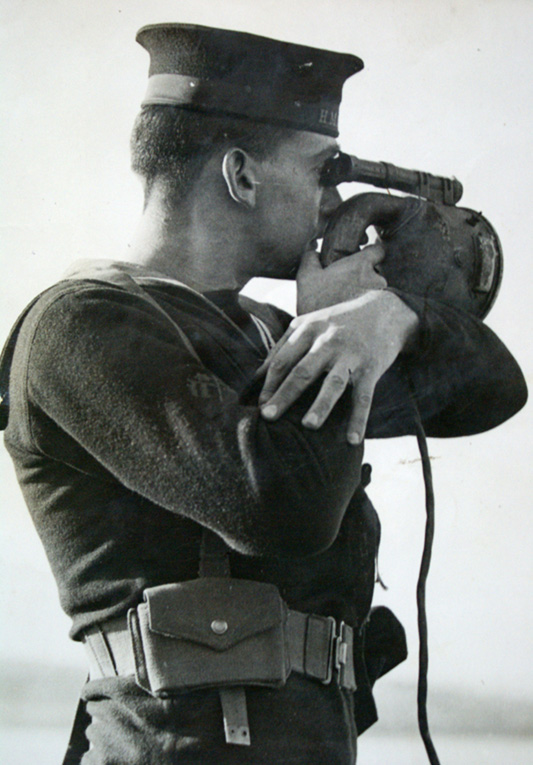
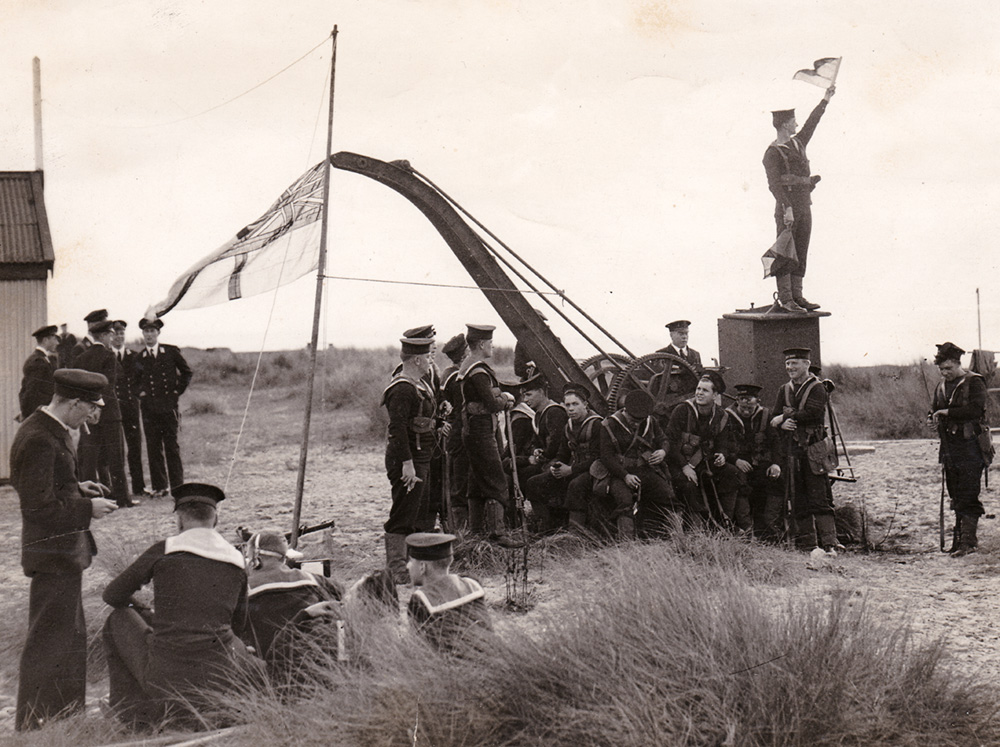
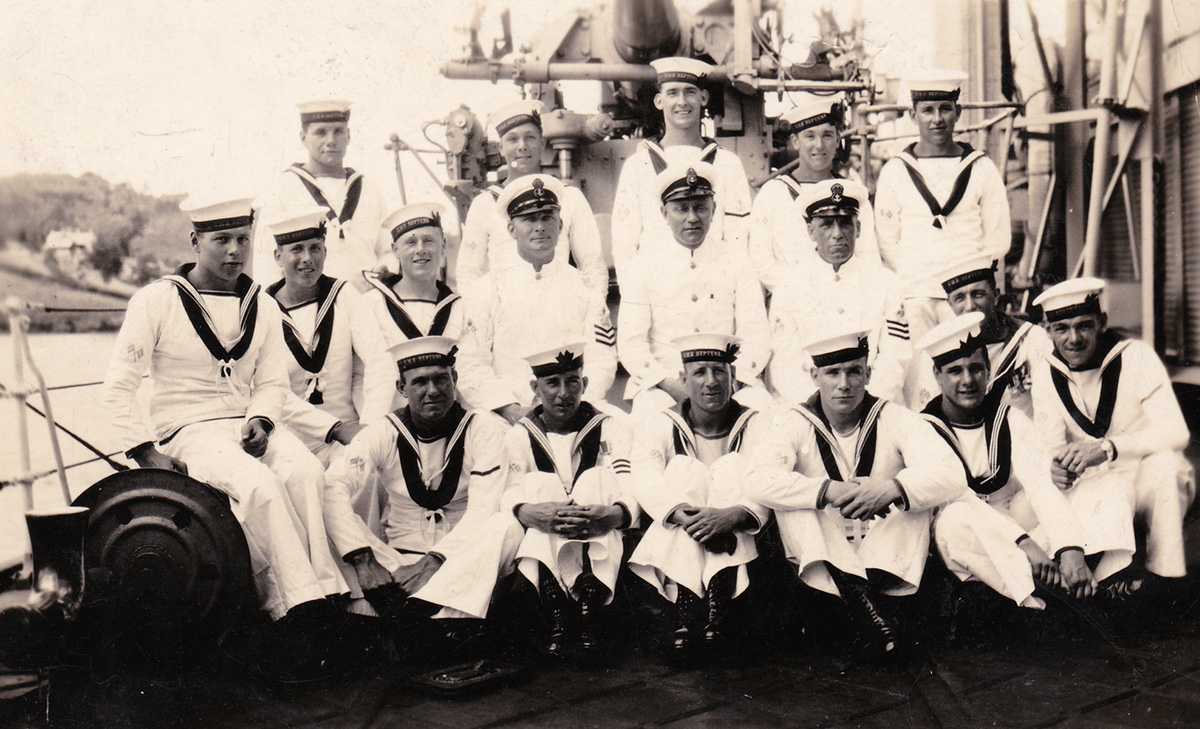


 On Christmas Day 1939 he "reverted"
to the rank of Leading Seaman and on the 11th January 1940 this highly
experiened Signalman was posted from Hood to an elderly V & W Class destroyer, HMS Venomous.
On Christmas Day 1939 he "reverted"
to the rank of Leading Seaman and on the 11th January 1940 this highly
experiened Signalman was posted from Hood to an elderly V & W Class destroyer, HMS Venomous.  By far the
most vivid story told by William Munro to his family is his description of an incident he witnessed when Venomous entered the harbour of Dunkirk at dusk on 23 May 1940 to bring back the Welsh Guards. Venomous
berthed on the Quai Chanzy alongside the Gare Maritime on the opposite
side of the narrow harbour from the town. The quayside was lined with
cranes. He described the man
operating the twin Lewis guns with a swivel mounting on the wing of the
bridge struggling to remove the empty drum magazines.
By far the
most vivid story told by William Munro to his family is his description of an incident he witnessed when Venomous entered the harbour of Dunkirk at dusk on 23 May 1940 to bring back the Welsh Guards. Venomous
berthed on the Quai Chanzy alongside the Gare Maritime on the opposite
side of the narrow harbour from the town. The quayside was lined with
cranes. He described the man
operating the twin Lewis guns with a swivel mounting on the wing of the
bridge struggling to remove the empty drum magazines.  HMS Venomous
was based at Londonderry when John McBeath was succeeded as CO by Cdr
H. Pitcairn Henderson RN on Christmas Eve 1940. McBeath was given
command of HMS Oribi, an O Class destroyer on 1 May 1941 while under construction at Govan on the Clyde but she was not commissioned until July.
HMS Venomous
was based at Londonderry when John McBeath was succeeded as CO by Cdr
H. Pitcairn Henderson RN on Christmas Eve 1940. McBeath was given
command of HMS Oribi, an O Class destroyer on 1 May 1941 while under construction at Govan on the Clyde but she was not commissioned until July. 